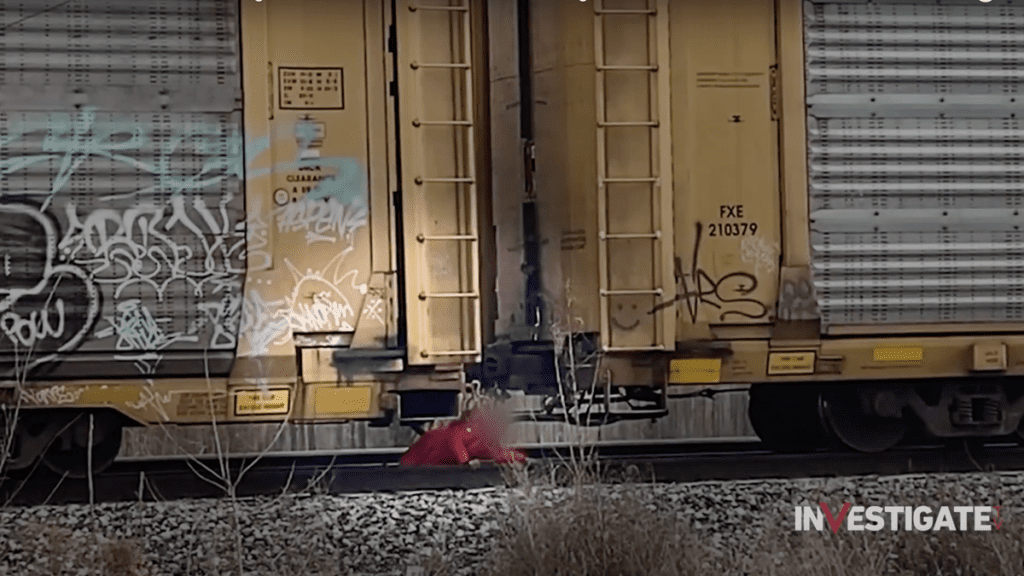Children Forced to Climb Under and Between Train Cars to Get to School: Report

Train companies have been making trains longer and longer to increase profits, but it’s the communities surrounding these trains that pay the price. A new report from ProPublica and InvestigateTV shows just how dangerous these long trains are even when they stay on the tracks.
Rainn Wilson is Tired of Tesla and its Yoke
ProPublica looked at the Chicago suburb of Hammond, Illinois, a study in how trains can disrupt communities and put lives in danger, especially children on their way to school. School children face a dangerous choice everyday: to walk a mile around a stalled train or make the harrowing decision to crawl over, between, or even under a train that could begin moving at any time.
News accounts chronicle horror stories: Ambulances can’t reach patients before they die or get them to the hospital in time. Fire trucks can’t get through and house fires blaze out of control. Pedestrians trying to cut through trains have been disfigured, dismembered and killed; when one train abruptly began moving, an Iowa woman was dragged underneath until it stripped almost all of the skin from the back of her body; a Pennsylvania teenager lost her leg hopping between rail cars as she rushed home to get ready for prom.
In Hammond, the hulking trains of Norfolk Southern regularly force parents, kids and caretakers into an exhausting gamble: How much should they risk to get to school?
The trains, which can stretch across five or six intersections at a time in this working-class suburb of 77,000, prevent students and teachers from getting to school in the morning. Teachers must watch multiple classrooms while their colleagues wait at crossings; kids sit on school buses as they meander the streets of an entirely different city to be dropped off a half-hour late. Brandi Odom, a seventh grade teacher, estimates that at least half her class is delayed by trains multiple times a week.
It seems Norfolk Southern is using the Hammond community to park their trains when Chicago’s busy depots get backed up. Because trains are regulated by the federal government, local officials are powerless to protect their citizens. Hammond Mayor Thomas McDermott Jr. told ProPublica the train companies have been less than helpful, telling him that the train tracks were there first:
In Hammond, for instance, police used to be able to write tickets for about $150 every time they saw a train stalled at a crossing for more than five minutes. Instead of paying the individual citations, Hammond officials told ProPublica, Norfolk Southern would bundle them and negotiate a lower payment.
“We weren’t getting anything,” McDermott, the mayor, said, “but it made our residents feel good.” An Indiana court took the industry’s side — as many courts in other states have done — ruling that only the federal government held power over the rails. “We can’t even write tickets anymore,” the mayor said. “It was more of an illusion, and we can’t even play the illusion anymore.”
Police officers have been delayed backing up fellow police in dangerous situations. The city maintains more firehouses than it needs because it can’t risk engines being delayed by trains that don’t move for hours or days. When the train does begin to move, they either fail to sound a warning bell or the engine is so far away from parts of the train—which can stretch for 2 miles—for people and kids struggling over the trains to hear.
Railroaded: Blocked crossings force kids to crawl under trains to get to school
For its part, Norfolk Southern says it works closely with communities to look for solutions—which is news to every official in Hammond. And the problem of stalled trains is by no means regulated to Hammond. Pacific Union blocks intersections in the busy city of Houston, Texas for hours on end, for instance. And once again, the real heart of the issue is greed; train companies are padding their multi-billion dollar profits with longer faster trains and fewer employees on crews. These super-long trains with skeleton crews are partially responsible for the rise in derailments in populated areas.

